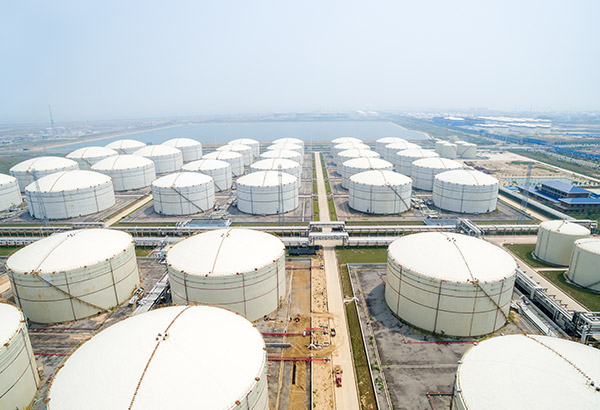At Benzine Storage and Terminal BV we operate owner of the tank storage in Rotterdam, Netherlands with major storage tank company in Amsterdam and Rotterdam terminal port. Our tank farms are situated above the ground and while some are beneath the ground with support for successful discharges of products into heavy duty oil tankers, vessels. We have large industrial amenities for the storage for oil and gas products before these products are formally transported to the end users or further to storage facilities. “Benzine Storage and Terminal BV” is involved in international storage terminal management, we currently manage and operate a tank farm fuel terminal in Amsterdam Rotterdam, Netherlands port and Rotterdam, Europe. We also have managed a bulk fuel terminal for another independent client.
We operate a global network of terminals located at strategic locations along major trade routes and a strong focus on sustainability, including safety, we ensure safe efficient and clean storage and handling of bulk liquid products and gases for our customers.

INTERNATIONAL STORAGE CO-OPERATION
Our co-operation with the international ports plays an important role in providing services to the storage of fuel for our customers. To carry out the storage various fuel lubricants, need a special license for the storage of petroleum products. State shall issue such licenses only to those companies that have all the necessary equipment.
We operate 24/7 with highly skilled and enthusiastic employees and with care for people. We use complex networks of onshore terminals, storage tanks, blending facilities
In most oil terminals there is no processing or other product transformation on site. The products from a refinery which are stored in the terminal are in their final form suitable for delivery to customers. Blending of products may be undertaken, and additives may be injected into products, but there is usually no manufacturing plant on site. Modern terminals have a high degree of site automation. Marine oil terminals have jetties to provide a deep water mooring for tankers. Jetties have loading/unloading arms for transferring cargo to/from ship to shore. Facilities for vapor recovery may be provided. Some oil terminals receive crude oil production from offshore installations. Crude oil received by pipeline may have been ‘spiked’ with natural gas liquids (NGL), and is known as live crude. Such oil needs to be processed or stabilized to remove the lighter fractions such as ethane, propane and butane to produce a dead or stabilized crude that is suitable for storage and transport. Such oil terminals may include processing facilities to treat the oil to achieve an oil Reid vapor pressure (RVP) of 10 to 12 psi (70 to 82 kPa). The process facilities include oil heaters to warm the oil which then routed to separator vessels. In the separators the lighter fractions flash off from the oil and are further processed to separate them into their individual components. The now stabilized oil can be routed to storage and then sold or sent for further processing.
The storage tanks at an oil terminal may includes fixed roof tanks, internal floating roof tanks and external floating roof tanks. Floating roof tanks are generally used for more volatile products to reduce evaporation loss. Fixed roof tanks which have a vapor space above the product and which breathes in or out as the product is removed or the tank is filled. Some tank may be fitted with internal heating coils using hot water or steam to keep the contents warm. This reduces the viscosity of the product to ease transfer and pumping. Terminals may also have ‘Horton spheres’ which are used to store liquefied petroleum gases such as propane and butane.


